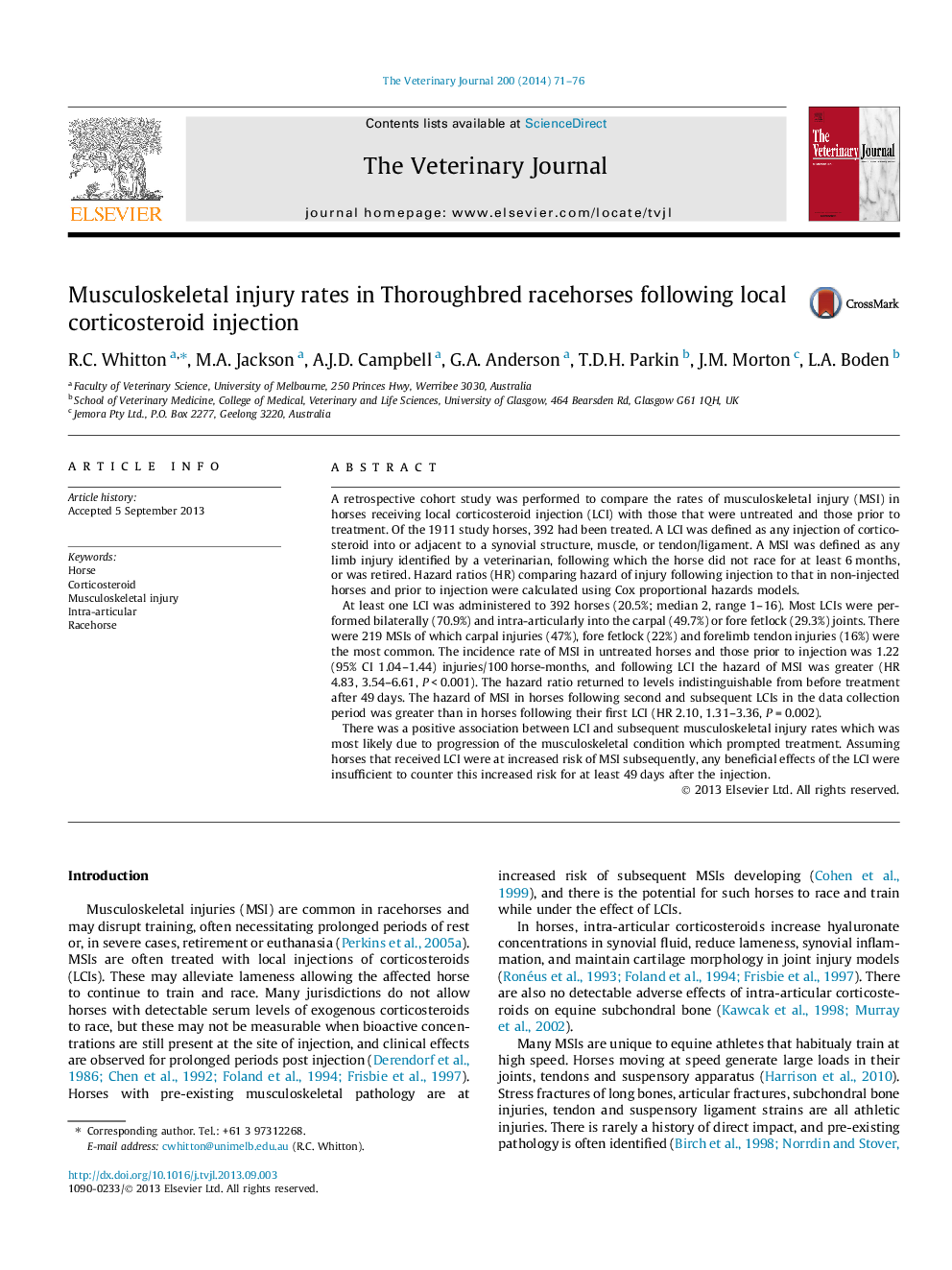| کد مقاله | کد نشریه | سال انتشار | مقاله انگلیسی | نسخه تمام متن |
|---|---|---|---|---|
| 2464001 | 1111769 | 2014 | 6 صفحه PDF | دانلود رایگان |
A retrospective cohort study was performed to compare the rates of musculoskeletal injury (MSI) in horses receiving local corticosteroid injection (LCI) with those that were untreated and those prior to treatment. Of the 1911 study horses, 392 had been treated. A LCI was defined as any injection of corticosteroid into or adjacent to a synovial structure, muscle, or tendon/ligament. A MSI was defined as any limb injury identified by a veterinarian, following which the horse did not race for at least 6 months, or was retired. Hazard ratios (HR) comparing hazard of injury following injection to that in non-injected horses and prior to injection were calculated using Cox proportional hazards models.At least one LCI was administered to 392 horses (20.5%; median 2, range 1–16). Most LCIs were performed bilaterally (70.9%) and intra-articularly into the carpal (49.7%) or fore fetlock (29.3%) joints. There were 219 MSIs of which carpal injuries (47%), fore fetlock (22%) and forelimb tendon injuries (16%) were the most common. The incidence rate of MSI in untreated horses and those prior to injection was 1.22 (95% CI 1.04–1.44) injuries/100 horse-months, and following LCI the hazard of MSI was greater (HR 4.83, 3.54–6.61, P < 0.001). The hazard ratio returned to levels indistinguishable from before treatment after 49 days. The hazard of MSI in horses following second and subsequent LCIs in the data collection period was greater than in horses following their first LCI (HR 2.10, 1.31–3.36, P = 0.002).There was a positive association between LCI and subsequent musculoskeletal injury rates which was most likely due to progression of the musculoskeletal condition which prompted treatment. Assuming horses that received LCI were at increased risk of MSI subsequently, any beneficial effects of the LCI were insufficient to counter this increased risk for at least 49 days after the injection.
Journal: The Veterinary Journal - Volume 200, Issue 1, April 2014, Pages 71–76
